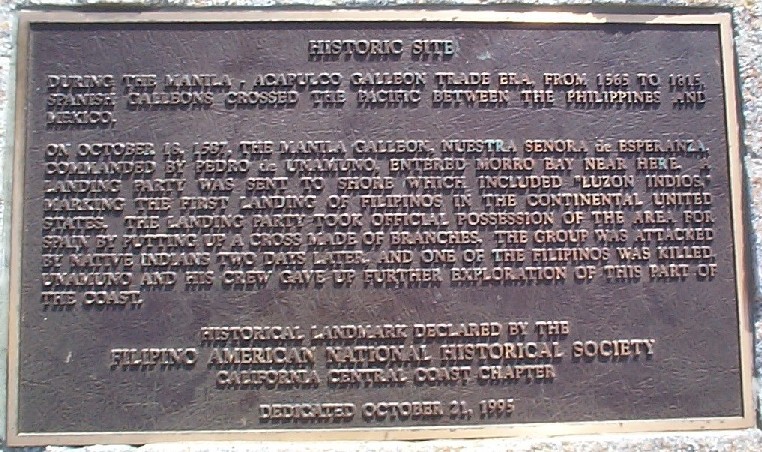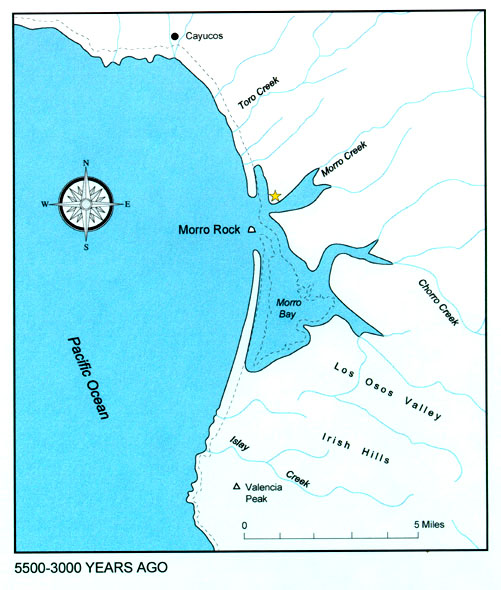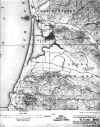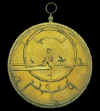Pedro de Unamuno's Reported Historic 1587 Visit to Morro Bay
--
Close, but no Banana!
For submission
to Nature Notes -- Mike Baird
As a new student of Morro Bay's history, I have run
across several essentially identical and generally unquestioned, timelines...
such as the one reproduced below. Adopted from Lynne Landwehr's web site
(Ref.)
- 1542 Juan
Rodriguez Cabrillo and party enter Estero Bay, do not land, but name Morro Rock.
- 1587 Pedro de Unamuno, Captain of a Manila Galleon, enters Morro Bay, sends
an expedition as far as San Luis Obispo, plants a cross to take possession in the name of Spain's King Philip.
- 1603 Former merchant Sebastian Vizcaino and party sail into Estero Bay, christen the Santa Lucia Coast range.
- 1769 Spain sends expedition to Alta California by land and by sea, to establish presidios, settlements, Missions.
- 1769 September: Portola's
well-documented overland party camps near Morro Bay.
- 1722 Fr. Serra establishes fifth Mission: San Luis Obispo de Tolosa, in village of
Tixlini.
So, in 1587, only 45 years after Juan Cabrillo sighted
Morro Rock (but did not enter Morro Bay due to treacherous environment), this Pedro
Unamuno fellow is reported to have simply landed on a beach here and gone
about his business of "fending off native Indian attacks from a nearby
hillside" There seems to be
little public doubt about this -- and there is even a plaque
posted at Coleman Park in Morro Bay, commemorating this landing.
However, the
thesis of this article is that his landing did not, in fact, occur -- at least
not any where very near to Morro Bay. Unamuno was himself soon forgotten. A few years after his
landing (somewhere, no doubt), nothing more was heard about him. The
"Puerto de San Lucas" that Unamuno discovered did not appear in nautical
charts -- and it almost surely was not present day Morro Bay. It could
have been near Avila (more about this, below).
The popular conclusion that Pedro de Unamuno landed in
Morro Bay is based almost entirely on 1929 conclusions by one Henry R. Wagner,
who had never seen Morro Bay, knew not of its unique majestic "Rock"
and encompassing sandspit... but whose main evidence for the Morro Bay location
being the computation of the latitude by the ship’s pilot, Alonso Gomez.
Unamuno said, “While thus anchored, about two harquebus-shots off the beach, we observed the sun between eleven and twelve o’clock noon, and found the port to be in full 35Ż║.” Morro Bay happens to be at latitude 35║ 22', almost exactly what Unamuno reported.
However, the accuracy of astrolabes used in the 16th century leaves a lot to be desired...
More about this later... we wanted to first plant the seeds of doubt in your
mind as we relate the tale below.
| Pedro Unamuno's claim is reflected in the text
of a plaque, which is located off Coleman Drive, near the
corner of Embarcadero Road, in Coleman Park next to the playground. Here
is a map to its location. Here is a
photo of the plaque, and a transcription of what it says: |
Historic Site
During the Manila-Acapulco Galleon Trade era from 1565 to 1815 Spanish galleons crossed the pacific between the Philippines and Mexico. On October 18, 1587, the Manila Galleon Nuestra Senora de Esperanza commanded by Pedro de Unamuno entered Morro Bay near here. A landing party was sent to shore which included Luzon Indios, marking the first landing of Filipinos in the continental United States. The landing party took official possession of the area for Spain by putting up a cross made of branches. The group was attacked by native Indians two days later, and one of the Filipinos was killed. Unamuno and his crew gave up further exploration of this part of the coast.
Historical Landmark Declared by the
Filipino American National Historical Society
California Central Coast Chapter
Dedicated October 21, 1995
|
|

|
|
Unamuno's 1587 landing is further chronicled
below by the Filipino American National Historical Society
(Ref.) |
| The Spanish galleon, Nuestra Senora de Buena Esperanza, captained by Pedro de Unamuno, anchored off the coast of present day Morro Bay, California, on Sunday, October 18, 1587. Filipinos (Luzones Indios) were among the crewmembers. Several Filipinos were sent to scout the shore. On October 20, during a skirmish with local Indians, one Filipino was killed. The galleon departed on October 22. -- From Capt.
Unamuno's handwritten journal, chronicled by Henry R. Wagner in "Spanish Voyages to the Northwest Coast of America in the Sixteenth Century," published in 1929 by the California Historical Society in San Francisco. |
| The Amerasia Journal
(Ref.) reports: |
On Sunday, October 18, 1587, the galleon Nuestra Se˝ora de Esperanza under the command of Pedro de Unamuno came into a bay somewhere in Central California. Since Unamuno reached that port on the day of San Lucas, he named it Puerto de San Lucas. From their ship, Unamuno and his men noticed two Indians on a hillside watching them. A council was convened on board ship and it decided to send a landing party ashore to explore and take the port in the name of King Philip.
The party came ashore in two groups: a group of twelve soldiers with coats of mail and arquebuses led by Unamuno himself and another group of Luzon
Indios of undetermined number led by the priest from Macao, Fr. Martin Ignacio de Loyola. Fr. Martin carried a cross in his hands while the
Indios were equipped with swords and shields.
With two Indio scouts leading the way, they saw five Indians in the distance (plus two babies carried by two Indian women on their backs). They made every effort to get and talk to them, but the Indians were fleet of foot and easily left them behind as they scrambled up the hill.
The shore party explored around for a while before finally erecting a cross to take possession of the territory for the King and returning to the Esperanza.
On Monday, October 19th, Unamuno came ashore again with twelve soldiers and a group of eight Luzon
Indios. This time the Indios were led by Fr. Francisco de Noguera. They landed before dawn and again sent two
Indio scouts ahead going in a direction different from the one they had taken previously. They found evidence of habitation including footprints, a camp, and seventeen dugouts of various sizes. It seemed that the native population was trying hard to avoid being seen. The rest of the day was uneventful and Unamuno’s party camped for the night under great oak trees near a river but away from the trail.
The next day, Tuesday, October 20, they proceeded to come down from the hills to return to their ship. They came upon another abandoned Indian camp, set on both sides of the river, and saw thirty dugouts similar to those they had seen the day before. They continued on their way to the
beach.
Before they got there, the two Indio scouts they had sent up a hill to look for their ship come running back down. The landing party realized they were being attacked and rushed back up the hill to drive away the attackers. Three Spanish soldiers were wounded and one killed. An
Indio was also killed by “a javelin which he failed to ward off with his shield.”
Many more Indians came descending from the hill to attack but Unamuno’s party was soon joined by reinforcements from their ship who had seen what was going on. Their superior firepower finally drove the Indians off and only one more soldier was wounded in addition to previous casualties.
At five in the afternoon, they made they way back to their ship as the Indians had withdrawn on account of approaching darkness.
Unbeknownst to those in the landing party, there had been an incident on Monday, October 19th that could explain why they encountered no Indians that day and why they were attacked the next day. Fr. Martin, who was with the original landing party, and some of those who stayed behind on the ship went ashore to check out a fire they had seen the night before and also to get wood and water. A Spaniard, armed with only a sword, was left to supervise a party of
Indios in washing clothes, gathering firewood, and obtaining fresh water while the rest of Fr. Martin’s party went on to investigate the site where the fires were seen the night before.
As the Indio team was doing its chores, twenty-three Indians came down the hill to check out what they were doing. The Indians, knowing they were in control, confiscated some clothes being washed and a few water casks and took them up the hill as booty. They came back to continue watching what the intruders were doing. At this point, Fr. Martin and the others came back from their foray. The Indians were apparently upset because they were led to believe that there were no visitors other than those they had been watching.
The Indians tried to capture the team leader but were prevented from doing so by arquebus shots from the ship. After much threat and some fighting, the Indians withdrew with some of their wounded and Fr. Martin’s party returned to the Esperanza.
Fr. Martin and his party had unwittingly set the stage for the attack the next day on Unamuno’s party as they made their way back to their ship.
That evening another council was held on board ship and it decided to leave and continue on to Acapulco before daybreak the next day, Wednesday, October 21, 1587.
This article was rewritten for the World Wide Web and first appeared in the November 1995 issue (2: 8) of Sulat sa Tans˘.
(Refs):
Licuanan,
Mathes, Wagner, Santos |
| Here is a 1900
Map of California, (showing that the town of Morro Bay was called
simply "Morro,") and illustrating where a more likely landing
site could have been, such as in Port Harford (now called Port
San Luis near Avila Beach) about 15 miles to the south. |
| Here are two or three simple arguments suggesting that the Unamuno
landing never occurred at present day Morro Bay: |
| Firstly, no mention was ever made of the existence of Morro Rock.
Obviously, Morro Rock existed in 1587, and it would have been hard to miss
during a two-day stay. How could anyone have made such an historic
landing, lasting several days, and not have mentioned Morro Rock? Trying
to rationalize their account... Did they perhaps land on the beach
north of the Rock in Estero Bay (where there are no hillsides near
the coast ,as chronicled above); or, did they enter the nascent Morro Bay harbor,
where there was no "beach" per se (only mudflats,
saltmarsh, and an outer sandspit), navigating the then shallow channels
and treacherous currents (and not mention such a configuration?). |
|
Secondly, no mention was ever made of the presence of a
sand spit. Wagner, who translated and interpreted Unamuno's handwritten journal,
personally believed that the sand spit did not exist in 1587 (it certainly was not described by Unamuno) and that the bay was wide open at the time.
We know today that the sand spit existed in 1587. Archeological
data chronicle native sites on its northern end of the sandspit, dating to 4000 years ago."
Here is a map of the Morro Bay area as envisioned 3000
- 5500 years ago.  ,
and the sand spit is shown to exist even back then.
,
and the sand spit is shown to exist even back then.
(from http://www.farwestern.com/morrobay/morro.htm
).
Here is a topographical map of Morro Bay from 1897  (view
smaller 638x814 map; print
larger 2550x3255 map). where the sand spit continues to assume its basic
form enclosing the bay.
(view
smaller 638x814 map; print
larger 2550x3255 map). where the sand spit continues to assume its basic
form enclosing the bay.
There are many photos of the Morro Bay harbor from around
1900 (well before the Rock was connected to the mainland, and the channel dredged)
(e.g., see http://morro-bay.com/photos-maps/
). The description of a simple "beach" landing (with no mention
from Unamuno of the Morro Rock, the harbor mudflats, the harbor saltmarsh,
the harbor entry surf and currents, the all-encompassing sandspit...) does not seem at all
consistent with what we know about Morro Bay harbor from 100 years ago.
|
| A third weaker argument is that It was stated above that the Unamuno party camped for the night under
great oak trees near a river. This is possible, but not highly likely
near Morro Bay. Of the several small creeks
entering, or near, Morro Bay (Morro Creek, Chorro Creek, and Los Osos Creek
furthest to the south), the first two of these creeks do not harbor great oak trees today.
We know that the general area of Morro Bay was almost treeless before Franklin
Riley promoted them in the new settlement in 1864. The Avila Beach, Port San Luis
area 15 miles to the south, however, possibly harbors a more sizeable river with
correspondingly larger surrounding
giant oak trees. |
So, why do we think that Pedro de Unamuno landed in
Morro Bay in 1587?
|
Adopted from Hector Santos notes:
(see http://www.bibingka.com/sst/esperanza/morrobay.htm
) |
| "The source of information... for the claim of
Unamuno's
1587 landing is Henry R. Wagner’s
Spanish Voyages to the Northwest Coast of America in the Sixteenth Century (California Historical Society, San Francisco, 1929) which
includes an English translation of Unamuno’s account of his travels.
Wagner’s main evidence for the Morro Bay location is the computation of the latitude by the ship’s pilot, Alonso Gomez. Unamuno said, “While thus anchored, about two harquebus-shots off the beach, we observed the sun between eleven and twelve o’clock noon, and found the port to be in full 35Ż║.” Morro Bay happens to be at latitude 35║ 22', almost exactly what Unamuno reported.
However, the accuracy of astrolabes used in the 16th century leaves a lot to be desired...
There are no bubbles or mirrors to aid in obtaining the sun’s altitude. It relies on gravity to establish the horizon so that its use on the pitching deck of a ship requires...
a steady hand."
Here is a photo  of a typical primitive astrolabe
of the day (see also Hector
Santos's site for another example). These are hardly devices
worthy of computing latitude to a fraction of a degree.
of a typical primitive astrolabe
of the day (see also Hector
Santos's site for another example). These are hardly devices
worthy of computing latitude to a fraction of a degree.
Unamuno stated that they made their observation between 11:00 am and 12:00 noon. It was not a night observation of Polaris, the north star, that would have been more accurate. It was also not made exactly at noon and would have required the interpolation of values in their charts, adding to errors already built in.
Wagner tries to explain away some of the discrepancies in topological features described by Unamuno in his narrative. He also acknowledges that Unamuno’s failure to describe Morro Rock, a very distinctive feature of the bay that one can hardly miss, speaks strongly against Unamuno’s landing in Morro Bay and that it is possible that Unamuno went ashore from San Luis Obispo Bay...
But he thinks that Unamuno “simply forgot to speak of the Morro.” |
The Filipino community (see Americans of Filipino Descent
http://personal.anderson.ucla.edu/eloisa.borah/filfaqs.htm#history
and
http://personal.anderson.ucla.edu/eloisa.borah/chronology.pdf
) is rightfully proud to want to document Unamuno's reported landing, in which
Luzones Indios appear to have been the first explorers to have landed in Central
California in 1587. Whether or not that landing was in Morro Bay is open
to interpretation. Let's indeed celebrate the landing -- but let's also do
our best to pinpoint its most likely location (which most likely was not Morro
Bay).
The truth may never be known.
References:
- Lynne Landwehr. Lynne's web site
HistoryinSLOCounty.org
has a timeline
http://HistoryinSLOCounty.org/Timeline%20for%20Morro%20Bay.htm
which in turn was derived from Dorothy Gates and Jane Bailey's Morro Bay's
Yesterdays, Morro Bay: El Morro Publications, 1982, Third printing 2001 by Central Coast
Press... based on newspaper headlines assembled by Mrs. Shirley McGuire during Morro Bay Centennial, 1970.
- Hector Santos. Hector Santos's
Sulat sa Tans˘
online newsletter (devoted to ancient Philippines history) ( see http://www.bibingka.com/sst/esperanza/morrobay.htm
and http://www.bibingka.com/sst/esperanza/indios.htm
) details
the landing story and makes the argument, in fuller detail, that Unamuno did not land in Morro Bay --
it is essential reading for anyone interested further in this topic.
- Filipino American National Historical Society
web site: Unamuno's 1587 landing is chronicled
http://www.fanhs17.com/oldfiles/timeline.html
at the , http://www.fanhs17.com/
- Amerasia Journal 21.3,
Volume 21, 1995, also reports this event (see http://www.sscnet.ucla.edu/esp/aasc/aj_index.html
http://www.sscnet.ucla.edu/esp/aasc/aj/aj21_3.html
)
-
Licuanan, Virginia Benitez and JosÚ Llavado Mira. The Philippines under Spain: A compilation and translation of original
documents, Book IV (1583-1590). Manila, 1993.
-
Mathes, W. Michael. The capture of the Santa Ana, Cabo San Lucas, November, 1587. Los Angeles, 1969.
-
Wagner, Henry R. Spanish voyages to the northwest coast of America in the sixteenth
century. San Francisco, 1929.
-
Santos, Hector. "The first Philippine Indios in California" in Sulat sa Tans˘ at
http://www.bibingka.com/sst/esperanza/indios.htm
. US, April 3, 1997.
This page is also published
on the Internet at http://morro-bay.com/docents/mike-baird/nature-notes/unamuno-1587/
Unlike the "paper version" appearing in Nature Notes, all
underlined text in the Internet version contains hyperlinks to much more
information.
Here are spelled out some of the implicit
embedded hyperlinks form the above paper.
More historical information about Morro Bay can be found at http://morro-bay.com/historical/
Revised
Monday, February 18, 2008 01:24:24 PM

 ,
and the sand spit is shown to exist even back then.
,
and the sand spit is shown to exist even back then.
